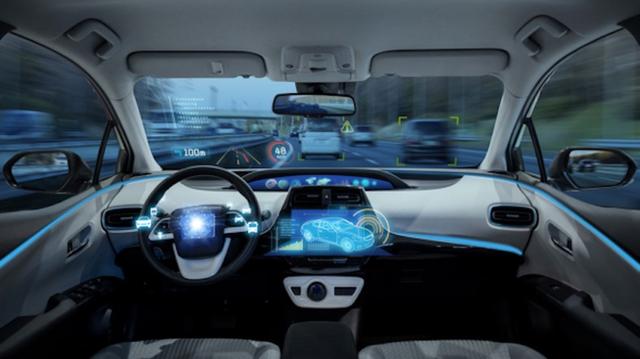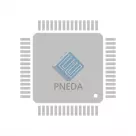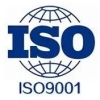Autonomous driving perception technology battle: pure vision and Lidar, who will dominate the future?

In the context of the rapid development of autonomous driving technology, perception system, as the core of achieving safe and reliable driving, has attracted wide attention. The key of the perception system is how to effectively obtain environmental information to ensure that the vehicle can accurately understand the complex surrounding scene. In this field, there are two main technical routes: pure visual perception systems and liDAR based perception systems. Each of these two technologies has its advantages and disadvantages, and is engaged in a fierce competition to seize the commanding heights of future autonomous driving.
Pure visual perception technology
Pure visual perception technology uses cameras to capture image information about the surrounding environment, which is processed by computer vision and deep learning algorithms. The advantage of this technology is that it is relatively low cost and easy to integrate. Compared with liDAR systems, the manufacturing cost and maintenance cost of cameras are significantly reduced, making it easier to be widely used in various types of autonomous vehicles. In addition, the cameras provide a continuous video stream that helps capture dynamically changing environments, such as the real-time status of pedestrians, vehicles, and traffic lights.
Second, the pure vision system is excellent at color and detail capture. Through high-resolution images, the vehicle is able to recognize the color of the signal light, the shape of the lane line, and the fine characteristics of the object, thus improving the decision-making ability of the system. For example, some advanced computer vision technologies are able to predict pedestrian behavior by continuously analyzing the scene, thus developing safer driving strategies.
However, the purely visual technology also faces some challenges. Changes in lighting, weather conditions (such as rain, fog, snow, etc.) and complex environmental conditions can significantly affect how well the camera works. In addition, the visual system has limitations in depth perception, and it is difficult to accurately judge the distance of objects. In order to solve these problems, many manufacturers have begun to combine a variety of sensors, using sensor fusion technology to enhance the perception of the system.
Lidar technology
Unlike pure visual perception, LiDAR uses laser beam ranging to build a model of the surrounding environment from accurate three-dimensional point cloud data. A significant advantage of Lidar technology is its superior depth perception, which allows it to maintain efficient performance in a wide range of light and weather conditions. Therefore, in complex urban environments, LiDAR can provide a more stable and reliable perception of the environment, thereby reducing the risk of accidents.
The three-dimensional point cloud data generated by LiDAR enables the vehicle to fully understand the surrounding spatial structure, including the shape, position and relative motion of objects. Through this technology, the autonomous driving system can clearly identify the location of the lane, traffic signs, and surrounding pedestrians and vehicles, so that it can react quickly in complex traffic scenarios.
Although LiDAR technology has obvious advantages in sensing ability, its high cost has restricted its large-scale promotion. Lidar equipment is often several times more expensive than cameras, and the complexity of installation and maintenance increases dramatically. In addition, the large size of liDAR systems makes integration into automotive design a certain challenge.
The technological fusion of the two
With the continuous progress of autonomous driving technology, the application of single sensing technology seems to be unable to meet the safety needs in complex environments. As a result, many autonomous driving companies have begun to explore solutions that combine pure vision and lidar technology. This sensor fusion approach aims to learn from each other to achieve a more comprehensive environmental perception.
By combining visual information with liDAR data, autonomous driving systems can obtain more accurate and rich environmental information. For example, the high-precision range data provided by LiDAR can compensate for the lack of depth in visual perception, while the vision system can provide color and detail information for the data generated by LIDAR. This combination not only improves the accuracy of perception, but also significantly improves the adaptability of the system to dynamic scenes.
On the other hand, with the breakthrough of deep learning and computer vision technology, the robustness and accuracy of pure vision systems are also improving. In the future development of technology, there may be pure visual schemes based on advanced algorithms that can match the perception effect of LiDAR to a certain extent. At the same time, with the advancement of semiconductor technology, the cost of lidar is also expected to gradually decrease, making it more feasible in the mass market.
Future market trends
At present, the battle between pure vision and lidar has not yet been concluded, and major car manufacturers and technology companies have increased research and development investment to seek breakthroughs. Tesla takes a purely visual route in the field of autonomous driving, and enhances its environmental perception ability through continuous improvement of neural network algorithms. Google's Waymo and Uber, on the other hand, use a hybrid lidar plus vision solution that relies on high-precision laser ranging to ensure vehicle safety.
Despite the fierce market competition, the differences between the parties in the choice of technical routes are bound to affect the future development of the autonomous driving industry. In the process of constantly updating and iterating technology, how to balance cost, security and technology maturity will be a problem that enterprises need to seriously consider when pursuing market breakthroughs. In this technology battle, the future winners may not just be proponents of pure vision or lidar, but companies that can flexibly apply a combination of sensor technologies. Through continuous research and development, autonomous driving technology will develop in a more perfect direction and respond to the needs of future travel.
您可能感興趣的產品
 |
CAR2012TEBXXZ01A | AC/DC CONVERTER 12V 2000W | 7434 More on Order |
 |
XSC003A5F91Z | DC DC CONVERTER | 7182 More on Order |
 |
ESTW010A0B41-SZ | DC DC CONVERTER 12V 120W | 8586 More on Order |
 |
AXH010A0M | DC DC CONVERTER 1.5V 15W | 3078 More on Order |
 |
EVK011A0B641Z | DC DC CONVERTER 12V 132W | 5292 More on Order |
 |
KNW015A0F41-88SRZ | DC DC CONVERTER 3.3V 50W | 8532 More on Order |
 |
QW030A1 | DC DC CONVERTER 5V 30W | 3654 More on Order |
 |
QW020A0Y | DC DC CONVERTER 1.8V 36W | 2070 More on Order |
 |
QRW035A0F1 | DC DC CONVERTER 3.3V 116W | 8928 More on Order |
 |
MC010B | DC DC CONVERTER 12V 10W | 4608 More on Order |
 |
LW020A1 | DC DC CONVERTER 5V 20W | 4302 More on Order |
 |
LW015C91 | DC DC CONVERTER 15V 15W | 5742 More on Order |
 |
LW010CL | DC DC CONVERTER +/-15V 10W | 8244 More on Order |
 |
JW050F6 | DC DC CONVERTER 3.3V 33W | 8604 More on Order |
 |
JAHW100G1 | DC DC CONVERTER 2.5V 50W | 8010 More on Order |
 |
DW025AB-M | DC DC CONVERTER 5V 12V 25W | 8262 More on Order |
 |
CW025ACL-M | DC DC CONVERTER 5V +/-15V 25W | 7776 More on Order |
 |
EBVW020A0B41-PHZ | DC DC CONVERTER 12V 240W | 7506 More on Order |
 |
KHHD015A0F41-SRZ | DC DC CONVERTER 3.3V 50W | 8838 More on Order |
 |
APTS012A0X43-SRZ | DC DC CONVERTER 0.69-5.5V 66W | 5058 More on Order |
 |
150034987 | DC DC CONVERTER 3-18V | 7236 More on Order |
 |
IND108XW | DC DC CONVERTER 3-18V 108W | 2106 More on Order |
 |
IND060SIP | DC DC CONVERTER 0.59-5.5V | 7920 More on Order |
 |
AXH003A0X-SRZ | DC DC CONVERTER 0.8-3.6V 10W | 2962 More on Order |









